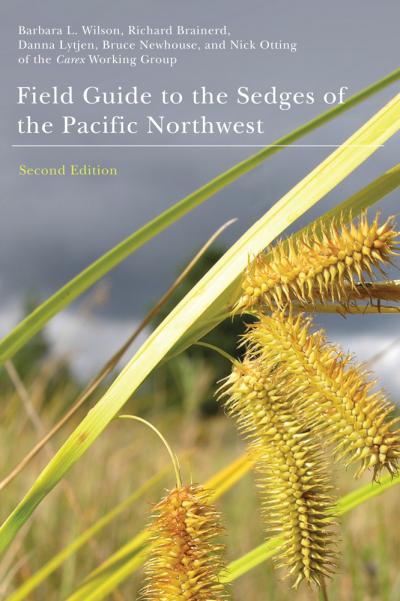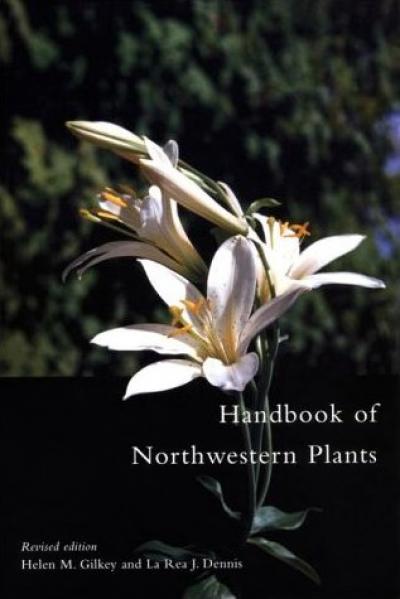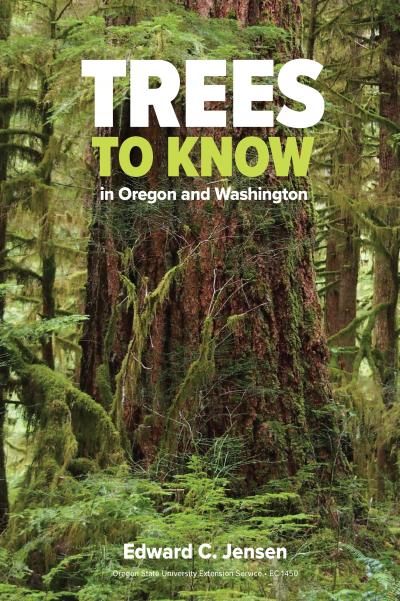
Propagation of Pacific Northwest Native Plants
Robin Rose, Diane L. Haase, and Caryn E. C. Chachulski
Increasing awareness of the beneficial role of native plants in promoting healthy ecosystems has generated new interest in propagation techniques. Native plants have been recognized as a crucial component of land management, especially after fires or other disturbances, and are widely used in habitat conservation efforts. In addition, native plants are increasingly desirable for landscaping and gardening.
Propagation of Pacific Northwest Native Plants, the first publication of its kind, provides propagation information on nearly one hundred and forty native plants. Designed for use by both nursery professionals and home gardeners, this working manual presents the most current and comprehensive information in this emerging field. Drawn from forestry and agricultural journals, as well as gardening and horticultural handbooks and personal sources, the techniques presented here offer invaluable direction to the many who wish to grow native plants.
The book is divided into four plant sections: shrubs, trees, forbs, and grasses. In addition to propagation techniques, the species accounts feature physical descriptions and information on habitat and geographic range. Abundant line drawings and an illustrated glossary help to ensure accurate use of this important new resource.
About the author
Robin Rose is associate professor and the director of the Nursery Technology Cooperative in the Department of Forest Science at Oregon State University.
Read more about this author
Diane L. Haase is the associate director of the Nursery Technology Cooperative.
Read more about this author
Caryn E. C. Chachulski is a faculty research assistant for the Nursery Technology Cooperative.
Read more about this author
Introduction
Metric Conversions
General Propagation Techniques
Forbs
Grasses
Shrubs
Trees
Illustrated Glossary
Index
Native plants have been increasingly recognized as a crucial component of forest management, especially after a fire or some other disturbance. they provide many benefits to the forest ecosystem such as erosion and flood control, wildlife forage and habitat, species diversity, soil stabilization, aesthetic enhancement, riparian restoration, revegetation of road cuts, and improvement of recreational areas.
In order to successfully propagate native plants, it is important to know a good deal about the target species. For seed collection, the plant must be properly identified and seed harvest must occur at the appropriate time for optimal seed vitality. The time of harvest can vary over the geographical range for a single species. Some species only produce an adequate seed crop every few years while others have prolific seed production every year. The method of seed collection can vary greatly among species based on plant form and seed size.
Growing native plants from seed can be a complicated task. Once collected, the variety of fruits, acorns, pods, capsules, and berries require differing equipment and techniques for extraction. Furthermore, seed longevity varies greatly among species: some can be stored for years while others need to be germinated immediately. The success of germination depends on knowing what each species requires to overcome physical barriers (i.e., seed coat) or physiological barriers (i.e. dormancy). The appropriate media, moisture, temperature, scarification, chemicals, light, and nutrients determine the success of germination and subsequent growth.
Vegetative propagation of native plants can also pose some interesting challenges. Plants can be produced by cuttings, division, layering, rhizomes, tissue culture, and grafting. Again, an understanding of each species is important to successful propagation by these techniques. One of the most common techniques is by rooted cuttings, but this must be approached on a species by species basis. Some species root more successfully using branch tips while others root well with stem, lear, or root cuttings. In addition, many species root more readily when treated with a root growth hormone.
The proper culturing of native plants, whether propagated by seed or vegetatively and whether grown in containers or bareroot, is another essential step to ensuring a vigorous plant crop. A certain level of heat and humidity is often required during germination of seed or rooting of cuttings. In addition, a careful fertilization and irrigation regime must be followed for good plant development and proper phenology. it is important to know which plants can withstand stress and which are extremely sensitive to variations in moisture, temperature, light, or other environmental factors.
Obviously, native plant propagation requires some experimentation and innovation. With so many species-specific propagation requirements and very little information available in the literature, native plant growers must refine their techniques based on trial and error and their available equipment, supplies, and facilities. Furthermore, the final product must be based on the ultimate use of the plant. Very large root systems may be desirable for planting in sand banks while a tall shoot may be needed to compete with surrounding vegetation in a riparian environment. In other cases, a small seedling may be sufficient to meet outplanting goals or perhaps seedlings from more than one age or size class may be used. To achieve the desired plant specifications, a plant grower must allow for the necessary nursery space and growing period.
Until now, there has not been a comprehensive manual on propagation of Pacific Northwest native plants. Until recently, most articles about native species have suggested ways to control or eradicate them. Increasing awareness of their beneficial role in promoting a healthy, stable ecosystem has necessitated a more detailed and extensive information base for their propagation. A thorough search of forestry and agricultural journals as well as gardening and horticultural handbooks does yield some useful propagation information, but such an exhaustive literature search is not practical or convenient for many who wish to grow native plants. Furthermore, some of the best information is in the minds of those who have learned through direct experience, many of whom have not had the time, funding, or inclination to publish or have only done so on a very limited basis.
The purpose of this manual is to present a compilation of information from literature sources and personal contacts and to make it widely available. However, because this is a newly documented field, some of the information is still fairly general. We would like to make clear that the techniques we present in this manual are not necessarily the only successful ones for a given species. We encourage readers to experiment with propagation techniques. If you discover a successful technique, tell us and we'll include it in the next edition of this manual!




